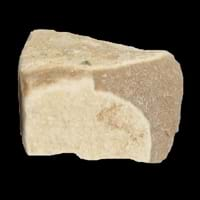Mudstone and Rhyolite
Definition
Definition
Mudstone is a fine-grained, dark gray sedimentary rock, which is formed from silt and clay and is similar to shale but has less laminations
Rhyolite is a fine-grained igneous rock which is rich in silica
History
Origin
Unknown
North America
Discoverer
Unknown
Ferdinand von Richthofen
Etymology
From the English mud and stone, from low German mudde and stainaz
From German Rhyolit, from Greek rhuax lava stream + lithos stone
Class
Sedimentary Rocks
Igneous Rocks
Sub-Class
Durable Rock, Soft Rock
Durable Rock, Hard Rock
Family
Group
Not Applicable
Volcanic
Other Categories
Fine Grained Rock, Opaque Rock
Coarse Grained Rock, Opaque Rock
Texture
Texture
Clastic
Aphanitic, Glassy, Porphyritic
Color
Black, Blue, Brown, Green, Grey, Orange, Red, White, Yellow
Grey, White, Light Black
Maintenance
Less
More
Durability
Durable
Durable
Water Resistant
Yes
Yes
Scratch Resistant
No
Yes
Stain Resistant
No
Yes
Wind Resistant
No
Yes
Acid Resistant
No
Yes
Appearance
Rough and Dull
Banded
Uses
Architecture
Interior Uses
Decorative Aggregates, Entryways, Floor Tiles, Interior Decoration
Decorative Aggregates, Homes, Hotels, Interior Decoration, Kitchens
Exterior Uses
As Building Stone, As Facing Stone, Paving Stone, Roof Tiles
As Building Stone, As Facing Stone, Paving Stone, Office Buildings
Other Architectural Uses
Curbing
Not Yet Used
Industry
Construction Industry
Cement Manufacture, Construction Aggregate, for Road Aggregate, Making natural cement, Raw material for the manufacture of mortar
Arrowheads, As Dimension Stone, Building houses or walls, Construction Aggregate, Cutting Tool, for Road Aggregate, Knives
Medical Industry
Not Yet Used
Not Yet Used
Antiquity Uses
Sculpture, Small Figurines
Artifacts
Other Uses
Commercial Uses
Creating Artwork, Pottery
Gemstone, Laboratory bench tops, Jewelry
Types
Types
Marl, Shale and Argillite
Pumice Rocks, Obsidian Rocks, Perlite Rocks, Porphyritic Rocks.
Features
Available in Lots of Colors and Patterns, Smooth to touch, Very fine grained rock
Acidic in nature, Available in lots of colors
Archaeological Significance
Monuments
Not Yet Used
Not Yet Used
Famous Monuments
Not Applicable
Not Applicable
Sculpture
Used
Not Yet Used
Famous Sculptures
Data Not Available
Not Applicable
Pictographs
Used
Not Used
Petroglyphs
Used
Not Used
Figurines
Used
Not Yet Used
Fossils
Present
Absent
Formation
Formation
Mudstone forms when very fine-grained clay particles are deposited in water which settle at the bottom of water bodies. They are buried and compacted by overlying sediment hence forming mudstone.
Rhyolite is a felsic extrusive rock and due to its high silica content, rhyolite lava is very viscous and is volcanic equivalent of granite.
Composition
Mineral Content
Biotite, Chlorite, Feldspar, Micas, Muscovite or Illite, Plagioclase, Pyrite, Quartz
Biotite, Feldspar, Hornblade, Plagioclase, Pyroxene, Quartz
Compound Content
Aluminium Oxide, NaCl, CaO, Iron(III) Oxide, Silicon Dioxide
Ca, Fe, Potassium Oxide, Mg, Potassium, Silicon Dioxide, Sodium
Transformation
Metamorphism
No
Yes
Types of Metamorphism
Not Applicable
Burial Metamorphism, Cataclastic Metamorphism, Regional Metamorphism
Weathering
Yes
Yes
Types of Weathering
Chemical Weathering, Mechanical Weathering
Biological Weathering, Chemical Weathering, Mechanical Weathering
Erosion
Yes
Yes
Types of Erosion
Chemical Erosion, Sea Erosion
Chemical Erosion, Sea Erosion, Water Erosion, Wind Erosion
Properties
Physical Properties
Hardness
2-3
6-7
Grain Size
Very fine-grained
Large and Coarse Grained
Fracture
Not Available
Sub-conchoidal
Streak
White
Colorless
Porosity
Highly Porous
Highly Porous
Luster
Dull
Earthy
Compressive Strength
Not Available
140.00 N/mm2
15
Cleavage
Perfect
Not Available
Toughness
2.6
2
Specific Gravity
2.2-2.8
2.65-2.67
Transparency
Opaque
Opaque
Density
2.4-2.8 g/cm3
2.4-2.6 g/cm3
Thermal Properties
Specific Heat Capacity
0.39 kJ/Kg K
23
Not Available
Resistance
Heat Resistant, Impact Resistant
Heat Resistant, Wear Resistant
Reserves
Deposits in Eastern Continents
Asia
Bangladesh, China, India, Russia
China, India
Africa
Ethiopia, Kenya, Morocco, South Africa, Tanzania
Angola, Egypt, Madagascar, Namibia, Nigeria, South Africa
Europe
Austria, France, Germany, Greece, Italy, Romania, Scotland, Spain, Switzerland
Germany, Iceland, Ireland, Italy, Spain
Others
Not Yet Found
Not Yet Found
Deposits in Western Continents
North America
USA
Canada, USA
South America
Bolivia, Chile, Colombia, Ecuador, Peru, Venezuela
Argentina, Bolivia, Chile, Colombia, Ecuador, Peru, Venezuela
Deposits in Oceania Continent
Australia
New South Wales, New Zealand, Queensland, Victoria, Western Australia
New Zealand, Queensland, Western Australia
All about Mudstone and Rhyolite Properties
Know all about Mudstone and Rhyolite properties here. All properties of rocks are important as they define the type of rock and its application. Mudstone belongs to Sedimentary Rocks while Rhyolite belongs to Igneous Rocks.Texture of Mudstone is Clastic whereas that of Rhyolite is Aphanitic, Glassy, Porphyritic. Mudstone appears Rough and Dull and Rhyolite appears Banded. The luster of Mudstone is dull while that of Rhyolite is earthy. Mudstone is available in black, blue, brown, green, grey, orange, red, white, yellow colors whereas Rhyolite is available in grey, white, light black colors. The commercial uses of Mudstone are creating artwork, pottery and that of Rhyolite are gemstone, laboratory bench tops, jewelry.
|
||
|
||
|










